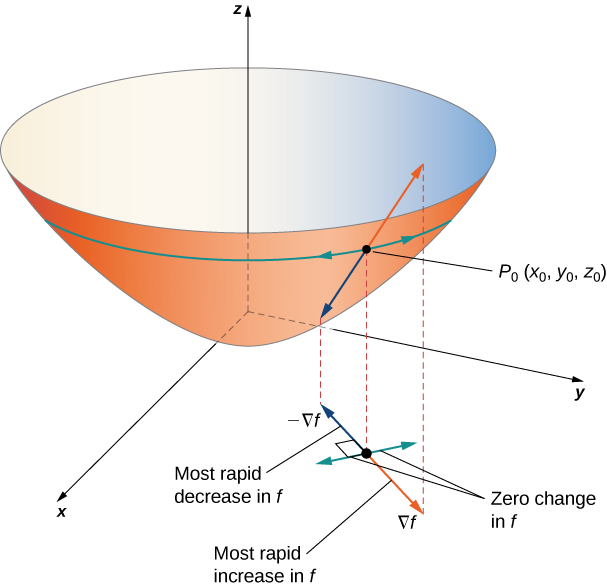Directional Derivatives serve to help us understand how a function changes in a particular direction. The gradient is a vector that points in the direction of the steepest increase of a function. The gradient is a generalization of the derivative to functions of multiple variables.
Abstract
example graph
Given and the point we seek the slope of the tangent line at in the direction of the unit vector
We are seeking to find the secant line that passes through the point and
For this purpose, we will use the abstract equation:
Where:
- vertical change is the change in z coordinates
- horizontal change is the change in x and y coordinates
Plugging in the imaginary values:
Where:
- is the x coordinate of the point on the secant line
- is the y coordinate of the point on the secant line
- is the z coordinate of the point on the secant line
- is the direction vector
Putting this all together, we get a graph that looks something like this:

In Layman’s Terms
Essentially, the directional derivative is a measure of how a function changes in a specific direction. The gradient is a vector that points in the direction of the steepest increase of a function. The gradient is a generalization of the derivative to functions of multiple variables.
Proofs
Definition
Directional Derivative of f at in the direction of , where is unit vector
Key Formula
Formula
This enables us to calculate the directional derivative in an arbitrary direc- tion, by taking the dot product of ∇f with a unit vector, u, in the desired direction.
Example
Example
Find the directional derivative of: at the point in the direction of
Lets start by finding the gradient of :
Tip
Always normalize the direction vector into a unit vector
After finding the gradient, we can plug in the values:
Conclusively, the directional derivative of at the point in the direction of is
Conclusion:
The directional derivative of at the point in the direction of is